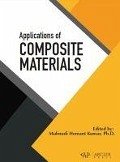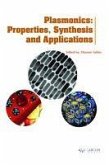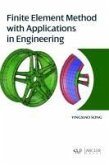The prospect of achieving any specific set of properties has stimulated the wide-ranging applications of composite materials in numerous industries. Composites, Nanocomposites and Bio-composites are being recognized as superior class of materials for aerospace, sports, transportation, mining, civil, electronics and many other industrial sectors. Fibrous materials have been broadly used in composites in various forms (tows, fabrics, nanofiber webs, sort fibers, mats, etc.) for strengthening purpose or for adding several functionalities. Vast flexibility of structure designing, material selection, and attainable features led to their widespread use in many industrial applications.This book discusses various categories of composite materials and their applications in modern composite industry. A preliminary discussion on the fundamental characteristics of composite materials, and their manufacturing techniques is illustrated in Chapter 1, i.e. Introduction to Composite Materials. Chapter 2 focusses on applications of composite materials in modern automotive industry. Domestic applications of composite materials are presented in Chapter 3, which focusses on household furniture products. Fiber reinforced composites are extensively employed in construction and civil sectors; detailed discussion regarding building structures and their repairs is presented in Chapter 4. Composite materials have enormous potential to revolutionize the energy sector. Use of advanced composites is discussed in Chapter 5, i.e. Uses of Composite Materials in Energy Sector. The subsequent five chapters, i.e. "Aerospace Applications of Composite Materials", "Military and Defense Applications of Composite Materials", Applications of Composite Materials in Mining Industry", Chapter 9: Uses of Composite Materials in Electronic and Bio sensing Applications" and "Applications of Composite Materials in Sports", cover innumerable categories of composite materials for diverse applications. This book contains a comprehensive collection of data on all brands of fibers, matrices and composite structures employed to develop a wide range of materials from polymers, metals, ceramics, plastics and natural fibers. Therefore, it is believed that this book can serve as a greatly valuable reference for a varied range of readers, including scientists, engineers, policy makers and professors.This book is also useful for teachers and students from different backgrounds including textile engineering, materials science, fiber science and technology, mechanical engineering, nanotechnology, chemical engineering, medical sciences and environmental science. In the end, I would like to extend my sincere gratitude to the editors of this book, and the members of scientific society for their kind support and help throughout the compilation of the book.
Hinweis: Dieser Artikel kann nur an eine deutsche Lieferadresse ausgeliefert werden.
Hinweis: Dieser Artikel kann nur an eine deutsche Lieferadresse ausgeliefert werden.








